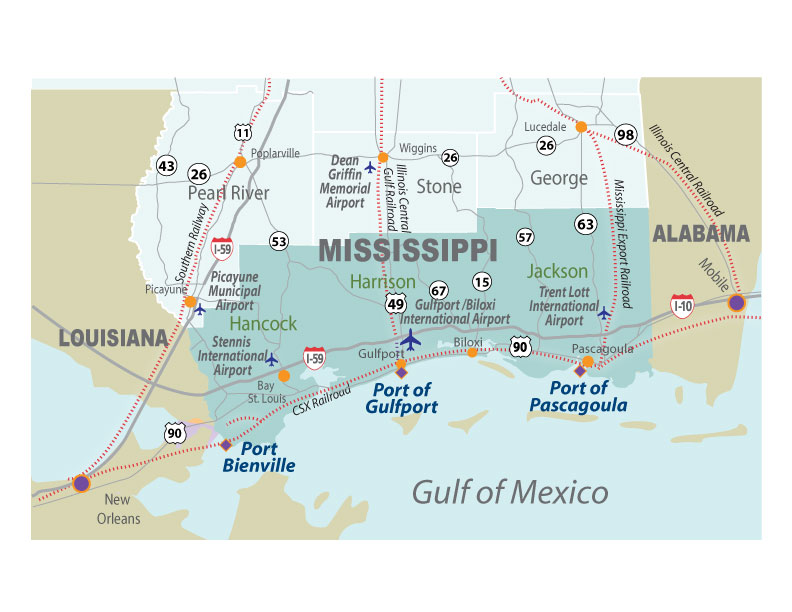Stennis already tests engines for space flights. Should they launch flights, too?
January 16, 2018

One-third of Hancock County is within the buffer zone that surrounds Stennis Space Center, a factor that could help Stennis International Airport get a license for commercial space flights and provide a boost to revenue and jobs for the area.
Last week, Hancock County Port and Harbor Commission selected RS&Hconsulting firm, headquartered in Florida, to look at the feasibility of applying for a license to launch commercial flights from the airport.
Janel Carothers, chief development officer for Hancock County Port and Harbor Commission, said $100,000 was budgeted for the study and the contract with RS&H came in at $90,000. The contract is for 12 months, but she said the study should be done by summer. RS&H has completed more Launch Site Operator License applications at airports than any other company, according to its proposal.
The study will look at whether the airport can and should support launch operations, and will return with information that answers:
▪ What are the potential economic benefits of a spaceport?
▪ Who are the potential users of a spaceport?
▪ What are the infrastructure needs?
▪ What kind of investment will it take?
▪ Where are the funding sources?
The license isn’t to allow major launches like those that take place at Cape Canaveral in Florida.
The Federal Aviation Administration has developed regulations and licenses for vertical launch of smaller rockets and horizontal launch vehicles, currently under development, which take off like aircraft and use a rocket to boost speed once they reach a certain altitude.
“Stennis is a great candidate for a Launch Site Operator License because it is surrounded by compatible land and the community is so rooted in the space age,” said Ken Ibold, senior aviation consultant for RS&H and the firm’s project manager for spaceport development at airports.
The 125,000-acre acoustical buffer zone surrounding Stennis Space Center was established by NASA for testing large engines without impact to neighboring people and property.
“We are literally on the line,” Carothers said. The buffer zone boundary goes down the middle of the runway at Stennis Airport.
A license would require restricted air space over the airport, Carothers said. “We already have that going on at Stennis Space Center,” she said, and the FAA is familiar with the airport and the area.
“Space is not new to Hancock County, home of NASA’s John C. Stennis Space Center, the nation’s largest rocket engine testing facility,” said Bill Cork, CEO of Hancock County Port and Harbor Commission. “The industry is poised for dynamic growth, and Hancock County is uniquely positioned to benefit from this growth.”
The airport, owned by the Port and Harbor Commission, received a $4.7 million federal grant in July for runway repair. It has 11,000 acres on the west side and just acquired an additional 800 acres on the east side at Mississippi 603 and Interstate 10, she said. If the airport is granted a license, Carothers said it could lead to manufacturing and testing facilities locating in Hancock County.
Mary Perez: 228-896-2354, @MaryPerezSH
Originally published by the Sun Herald here: http://www.sunherald.com/news/business/article194835664.html#storylink=cpy.




